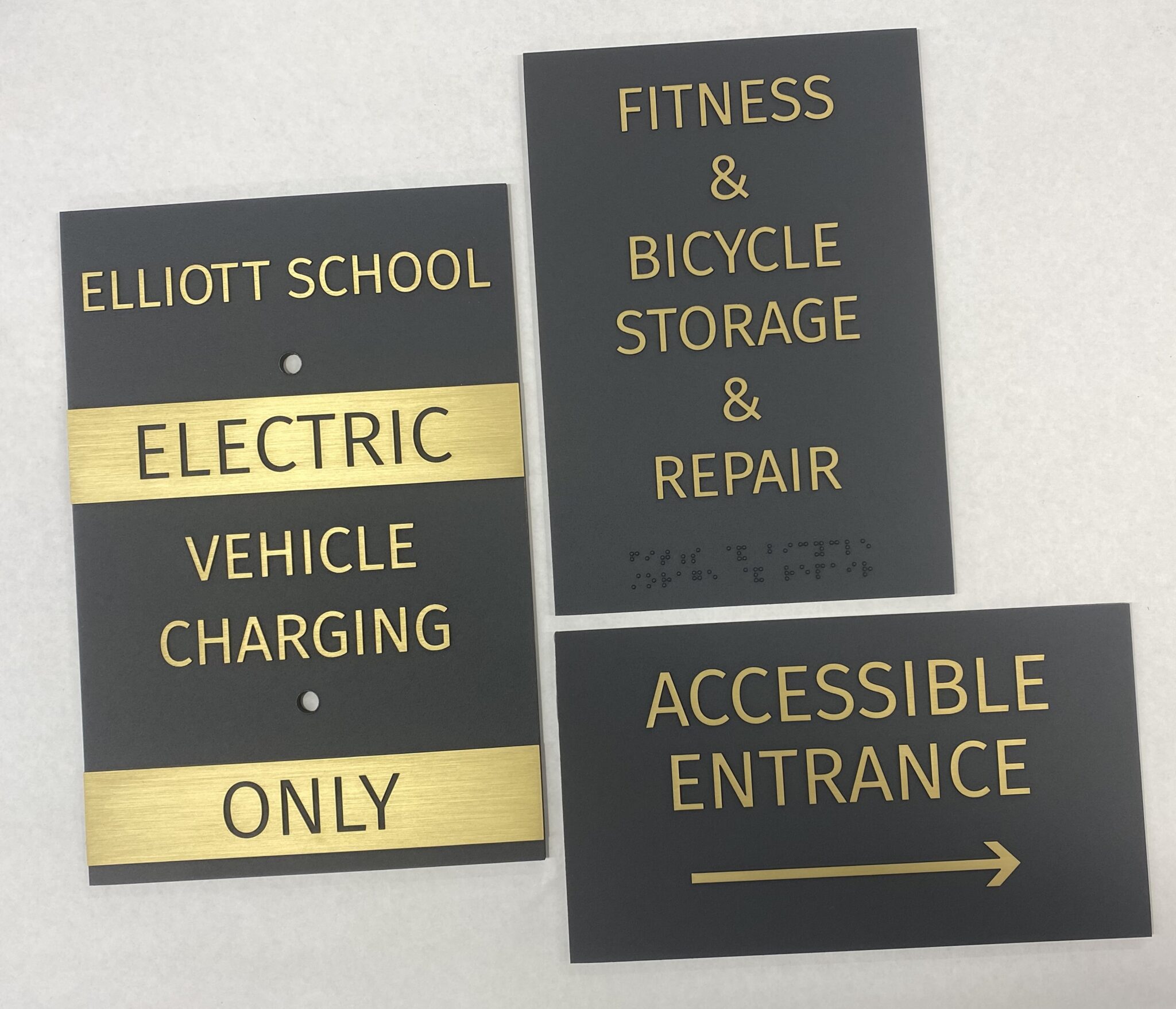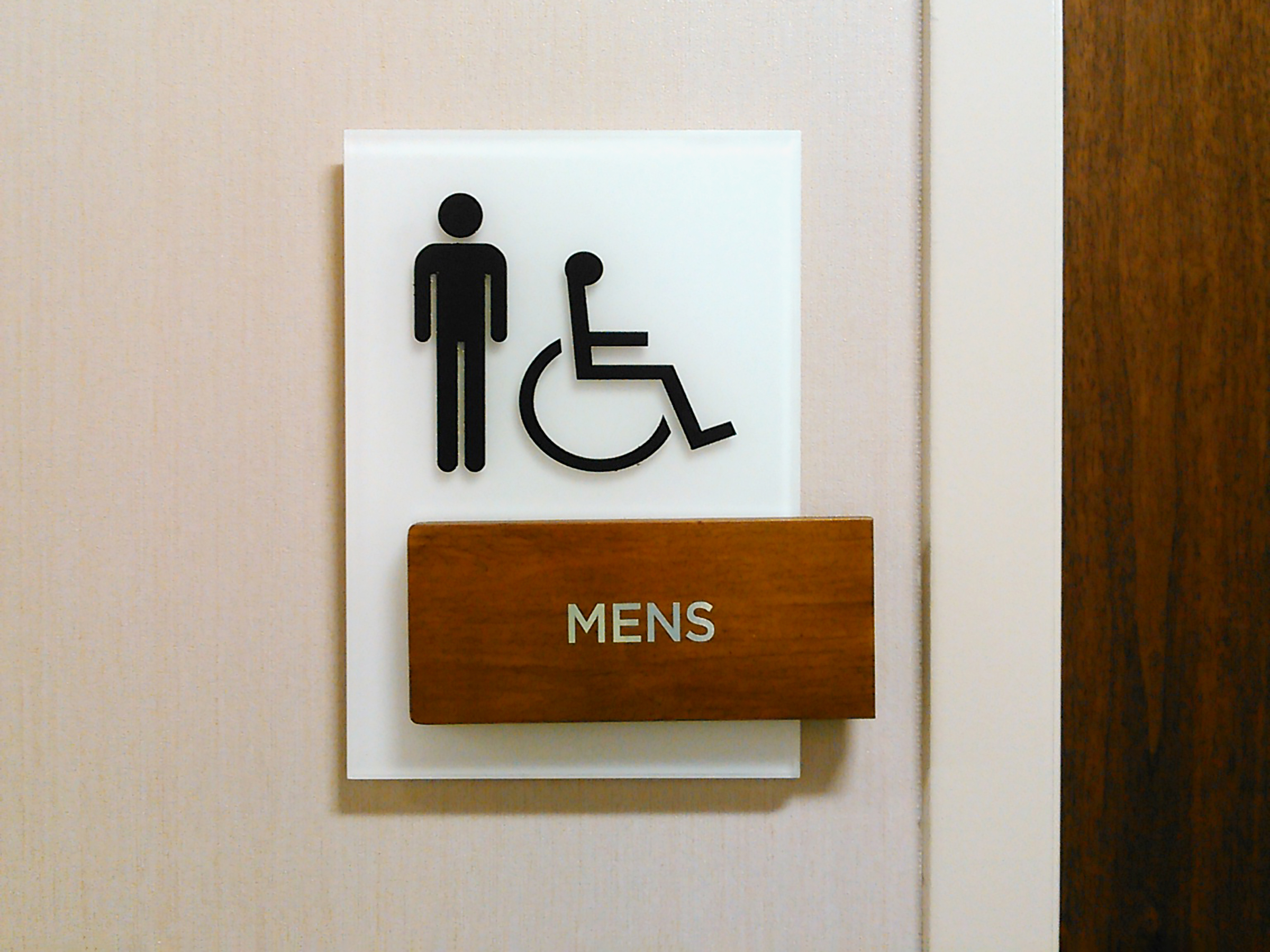Exactly How ADA Signs Boost Accessibility for Everyone
Exactly How ADA Signs Boost Accessibility for Everyone
Blog Article
Checking Out the Secret Functions of ADA Indicators for Improved Availability
In the world of access, ADA indicators act as silent yet powerful allies, guaranteeing that spaces are comprehensive and navigable for individuals with impairments. By integrating Braille and responsive aspects, these indicators break barriers for the aesthetically impaired, while high-contrast color pattern and legible font styles provide to diverse visual needs. Moreover, their tactical positioning is not approximate yet instead a computed effort to facilitate smooth navigating. Yet, beyond these functions lies a much deeper narrative concerning the development of inclusivity and the ongoing dedication to producing fair areas. What a lot more could these indications represent in our search of universal ease of access?
Value of ADA Conformity
Guaranteeing conformity with the Americans with Disabilities Act (ADA) is critical for promoting inclusivity and equivalent accessibility in public spaces and offices. The ADA, passed in 1990, mandates that all public centers, companies, and transportation services suit individuals with handicaps, guaranteeing they enjoy the same rights and possibilities as others. Compliance with ADA standards not only satisfies legal responsibilities however also enhances an organization's credibility by demonstrating its dedication to variety and inclusivity.
One of the key aspects of ADA compliance is the implementation of easily accessible signs. ADA signs are created to make sure that people with handicaps can conveniently browse via areas and buildings. These indications should comply with details standards pertaining to dimension, font style, shade contrast, and positioning to assure presence and readability for all. Effectively executed ADA signs aids remove obstacles that people with disabilities commonly run into, therefore advertising their independence and confidence (ADA Signs).
In addition, sticking to ADA guidelines can reduce the threat of possible fines and legal repercussions. Organizations that fall short to abide by ADA guidelines might deal with fines or claims, which can be both monetarily difficult and harmful to their public picture. Therefore, ADA compliance is important to fostering a fair setting for everyone.
Braille and Tactile Components
The unification of Braille and tactile aspects right into ADA signage symbolizes the concepts of availability and inclusivity. These features are crucial for people who are visually damaged or blind, enabling them to browse public areas with better self-reliance and self-confidence. Braille, a responsive writing system, is important in supplying written info in a style that can be conveniently perceived with touch. It is typically put below the equivalent message on signage to guarantee that people can access the information without visual help.
Responsive aspects expand past Braille and include raised icons and personalities. These elements are developed to be discernible by touch, allowing individuals to identify room numbers, toilets, leaves, and various other critical areas. The ADA establishes certain standards concerning the size, spacing, and placement of these tactile aspects to optimize readability and make certain consistency across various settings.

High-Contrast Shade Schemes
High-contrast color design play a pivotal duty in boosting the presence and readability of ADA signage for people with visual impairments. These schemes are important as they optimize the difference in light reflectance in between text and history, making sure that indications are conveniently discernible, also from a range. The Americans with Disabilities Act (ADA) mandates the use of certain color contrasts to suit those with restricted vision, making it a vital aspect of conformity.
The effectiveness of high-contrast colors depends on their ability to attract attention in different lights conditions, consisting of poorly lit atmospheres and areas with glow. Usually, dark message on a light history or light message on a dark history is employed to accomplish optimum comparison. For circumstances, black message on a yellow or white background supplies a raw aesthetic distinction that helps in quick acknowledgment and comprehension.

Legible Fonts and Text Size
When taking into consideration the design of ADA signage, the option of readable typefaces and proper text size can not be overstated. These elements are vital for making sure that signs come to individuals with visual disabilities. The Americans with Disabilities Act (ADA) mandates that font styles need to be not italic and sans-serif, oblique, manuscript, very attractive, or of uncommon kind. These demands assist make sure that the text is quickly readable from a distance which the personalities are distinct to try this web-site varied audiences.
The browse around here dimension of the message likewise plays an essential function in accessibility. According to ADA guidelines, the minimal message elevation ought to be 5/8 inch, and it ought to increase proportionally with viewing range. This is particularly essential in public spaces where signage demands to be reviewed quickly and precisely. Consistency in text size contributes to a cohesive aesthetic experience, aiding people in navigating environments effectively.
In addition, spacing in between letters and lines is indispensable to clarity. Adequate spacing stops personalities from appearing crowded, improving readability. By sticking to these standards, developers can substantially improve ease of access, making certain that signage offers its desired purpose for all individuals, despite their visual abilities.
Reliable Placement Methods
Strategic placement of ADA signage is vital for maximizing ease of access and guaranteeing compliance with legal requirements. ADA guidelines stipulate that signs need to be placed at an elevation between 48 to 60 inches from the ground to ensure they are within the line of view for both standing and seated individuals.
Furthermore, signs need to be put adjacent to the lock side of doors to allow very easy identification prior to entrance. Consistency in indicator placement throughout a center improves predictability, reducing complication and enhancing general user experience.

Conclusion
ADA indications play an essential duty in promoting access by integrating functions that resolve the needs of individuals with disabilities. Incorporating Braille and responsive components ensures vital details is easily accessible to the aesthetically impaired, while high-contrast shade schemes and clear sans-serif font styles boost exposure throughout numerous lights problems. Reliable positioning methods, such as proper placing elevations and strategic locations, even more promote navigation. These elements collectively cultivate an inclusive setting, highlighting the importance of ADA compliance in guaranteeing equal access for all.
In the realm of ease of access, ADA signs offer as silent yet effective allies, making sure that areas are accessible my review here and inclusive for people with specials needs. The ADA, established in 1990, mandates that all public facilities, companies, and transport services suit people with impairments, guaranteeing they appreciate the same civil liberties and chances as others. ADA Signs. ADA signs are designed to make certain that individuals with specials needs can quickly navigate with buildings and rooms. ADA guidelines specify that indications should be placed at a height in between 48 to 60 inches from the ground to ensure they are within the line of sight for both standing and seated people.ADA signs play a vital function in promoting access by integrating attributes that address the demands of people with specials needs
Report this page